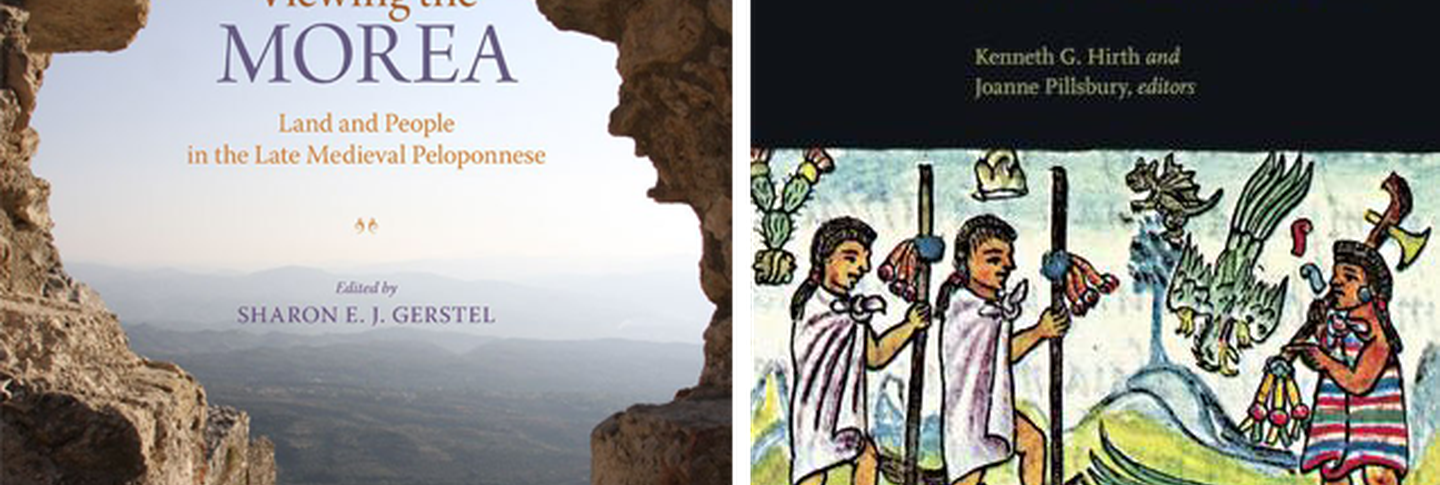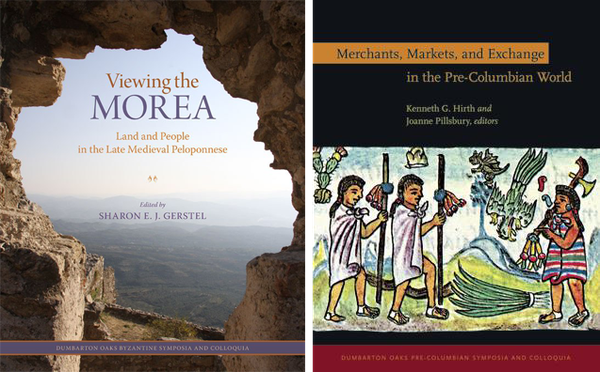Viewing the Morea: Land and People in the Medieval Peloponnese
Edited by Sharon E. J. Gerstel
“I'm going to tell you a great tale, and if you will listen to me, I hope it will please you.” The opening line of the Chronicle of the Morea sets the stage for this volume, which examines the late medieval Peloponnese following its conquest by Crusader knights. The Chronicle, other written sources, buildings, and excavated finds reveal a bold attempt to establish a new kingdom in a distant land, adding yet another layer to the many levels of habitation on the "island of Pelops." Too often omitted from this myth of Crusader foundation are the large numbers of Orthodox villagers and town dwellers who shared the region and created their own myth of an eternal and sacred empire generated by the pains of loss and the hopes of refoundation. Their remains, though less studied, are also left in the written and material records of the period. Layered upon the historical and physical topography of this region, too, are the traces of the Venetians, whose “right eye,” Modon, was located at the southwestern tip of the peninsula. The Turkish layers, revealed in standing fortresses, toponyms, vernacular poetry, and pottery, also left deep traces on the ground and remain in collective memory. How these groups, and others who shared the land, interacted and how they asserted their identity is at the center of this volume. At the core of this volume, too, is the understanding of place and memory--the recollection of the ancient history of the Peloponnese, the architectural and cartographic marking of its mountains and valleys, the re-creation of distant capitals on its land, and the re-fashioning of the Morea for a Renaissance audience. The authors of this volume look at the Morea and its people in the broadest possible manner and with careful attention to written and material evidence, historiography, economic networks, and the making--or re-telling--of myths.
Merchants, Markets, and Exchange in the Pre-Columbian World
Edited by Kenneth G. Hirth and Joanne Pillsbury
This book examines the structure, scale, and complexity of economic systems in the pre-Hispanic Americas, with a focus on the central highlands of Mexico, the Maya Lowlands, and the central Andes. Civilization in each region was characterized by complex political and religious institutions, highly skilled craft production, and the long-distance movement of finished goods. Scholars have long focused on the differences in economic organization between these civilizations. Societies in the Mexican highlands are recognized as having a highly commercial economy centered around one of the world’s most complex market systems; those of the Maya region are characterized as having reciprocal exchange networks and periodic marketplaces that supplemented the dominant role of the palace; and those of the central Andes are recognized as having multiple forms of resource distribution, including household-to-household reciprocity, barter, environmental complementarity, and limited market exchange. Papers in this volume examine various dimensions of these ancient economies, including the presence of marketplaces, the operation of merchants (and other individuals) who exchanged and moved goods across space, the role of artisans who produced goods as part of their livelihood, and the trade and distribution networks through which goods were bought, sold, and exchanged.

